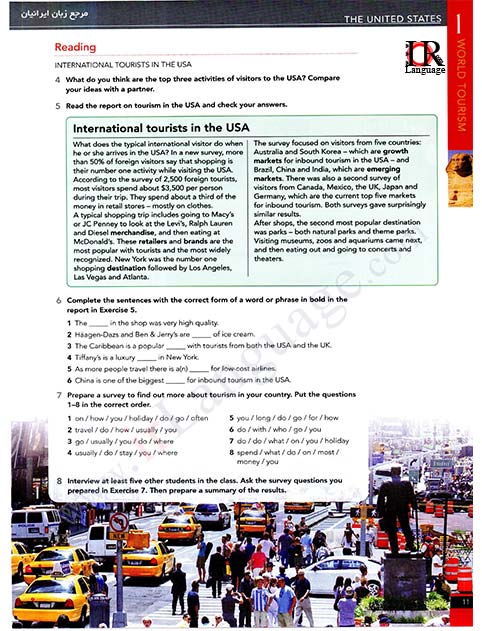- English For International Tourism Intermediate Course Book Pdfdiate Coursebook Pdf
- English For International Tourism Intermediate Course Book Pdf Free

TWO NEW LEVELS
English for international tourism / Intermediate Teacher's Book, Intermediate Teacher's Book / Amanda Bailey.
ENGLISH FOR INTERNATIONAL TOURISM INTERMEDIATE STUDENTS BOOK To get English for International Tourism Intermediate Students Book PDF, remember to refer to the button below and save the document or get access to other information which might be in conjuction with ENGLISH FOR INTERNATIONAL TOURISM INTERMEDIATE STUDENTS BOOK book. Longman Group, 2002. Download PDF - Book English For International Tourism Intermediate.pdf pnxkd2e3994v.
English For International Tourism Intermediate Course Book Pdfdiate Coursebook Pdf
- Brings the working world into the classroom with a wide range of authentic materials taken from sources including the acclaimed Dorling Kindersley Eyewitness Travel Guides
- Brings the working world into the classroom with authentic material from companies within the tourism industry
- Improves professional communication skills with strategies for workplace situations such as giving advice, taking bookings, dealing with complaints
- Develops key grammar, skills, vocabulary and pronunciation through the comprehensive integrated syllabus
Effective English language and interpersonal skills are now an essential job requirement in the hotel and tourism industries. In a global working environment where employees are in constant contact with each other and the public, the ability to use English is an absolute necessity.
English for International Tourism is a language course designed to cater for learners studying for vocational qualifications in the travel trade and for working professionals undertaking in-service language training. The course deals with the language of tourism from an insider's occupational perspective rather than of the individual traveller. However, neither teacher nor student needs first hand knowledge of the industry because, it is not technical or over-specialised in nature.
The Student's Book contains twelve main units and three consolidated sections. Each unit contains a variety of language tasks developed around topics related to the travel industry and provision of hotel accommodation. Each unit contains one or more listening tasks, a language focus section followed by practice, vocabulary development, pronunciation practice and a speaking section which is designed to bring language previously studied into use. Reading and writing skills also feature prominently as do the professional practice boxes which provide language and skills that are necessary when performing work-related tasks.
The skill-based syllabus ensures that students are provided with extensive communicative practice ranging from customer service encounters such as hiring a car or manning a hotel reception desk to preparing and giving presentations or dealing with business mail.
To this end, a wide variety of industry-specific contexts have been chosen to represent the diversity of the travel industry today and to reflect the global nature of tourism. The listening activities are designed to accustom students to a variety of native and non-native speakers using English as an international language.
Language focus aims to teach grammar using using a functional approach where the goal is to help the learner become aware of the way in which grammatical choices convey meaning. The grammar and vocabulary sections arise out of the communicative needs of tourism professionals and feed into subsequent activities. For example pair work tasks are explicitly designed to give further contexts of use for the language previously introduced.
Authentic Materials help lerners cope with real English. Thus, many of the pages use extracts from Dorling Kindersley's Eyewitness Travel Guides which are visually attractive and provide key, up-to-date information on important travel destinations. Many sections also make use of the internet as the web has become such an important tool in promoting and selling tourism.
A separate Workbook is available for extra practice as homework or on a self-study basis. It follows the same unit by unit format and provides further work on reading, grammar, functions, vocabulary, pronunciation and writing.

The Teacher's Resource Book provides step-by-step notes on using the material, ideas for extra activities, advice on coping with mixed ability classes, background information on tourism topics and destinations as well as a bank of extra photocopiable materials.
English For International Tourism Intermediate Course Book Pdf Free
